Magic of mangroves: The plant that sequesters more CO2 than rainforests
We’re barely scratching the surface when it comes to the benefits of mangroves. But if they’re so useful, what’s stopping us from planting them everywhere?
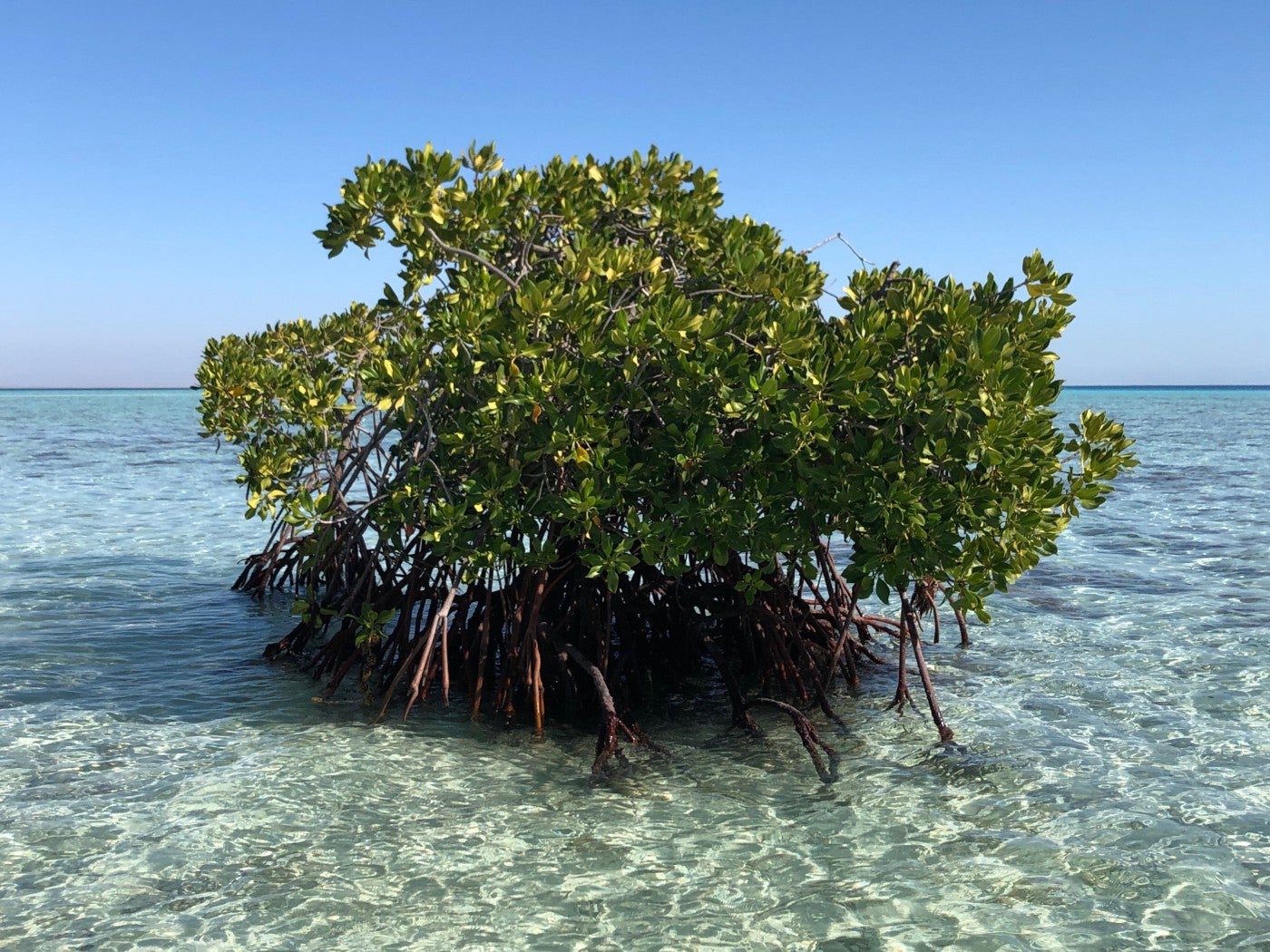
As a plant, mangroves aren’t really much to look at. Clustered around the brackish waters of estuaries, a floating mop of messy green foliage is all you see from afar. It’s only when the tide goes out, and the tangle of knotted roots appears, that you really see the whole thing.
One of the first western records of this plant appeared in the works of Pliny the Elder, the Roman author and naturalist who lived between AD23 and AD79. He had never seen plants that could grow on water, and wrote of his discovery: “on the Red Sea, the trees are of a remarkable nature”.
Almost 2,000 years later, scientists are still discovering remarkable things about these plants, like the fact that they can sequester more CO2 than rainforests, says Professor Carlos Duarte, a leading marine ecologist at Saudi Arabia’s King Abdullah University of Science and Technology (Kaust), and they’re barely scratching the surface.
Indeed, there is still much we don’t know about mangroves, including precisely how many species of plants there are. Conservative estimates place the figure at around 50, but this can go up to more than 100 depending on who you consult and how the plants are classified. The core requirement is that it’s a tree or a shrub that’s able to live in the salt-rich and oxygen-poor waters of tropical and subtropical climates. Exactly how it does this varies, too.
Take for example the Rhizophora stylosa, an elongated plant found in Asia where it’s commonly known as the stilted mangrove. Its root is made up of three distinct layers of material that act as fine filters to remove as much as 90 per cent of the salts from the water before it enters the plant – a feature that could feed into the development of more effective desalination filters in future.
Meanwhile, if you look closely at the Avicennia marina, the grey mangrove, it’s often possible to spot salt crystals on the underside of its leaves. This species, the most prevalent variety around the world, has a similar salt filtration system in its roots but it’s not nearly as effective. Perhaps just 50 per cent of the salt is removed from the water before it enters the plant. The rest is stored in the leaves or bark, while any excesses are excreted through its leaves, just like sweat.
Another differentiator between mangroves and other plants is that most of their roots are above ground, some branch out from trunks like stilts while others erupt from the earth like stalagmites – or a spike pit if you’re being really imaginative – but always exposed during low tide rather than hidden below ground. This aerial root network not only helps to secure the plant in place against the bashing waves but it also increases the mangrove’s oxygen uptake from the water.
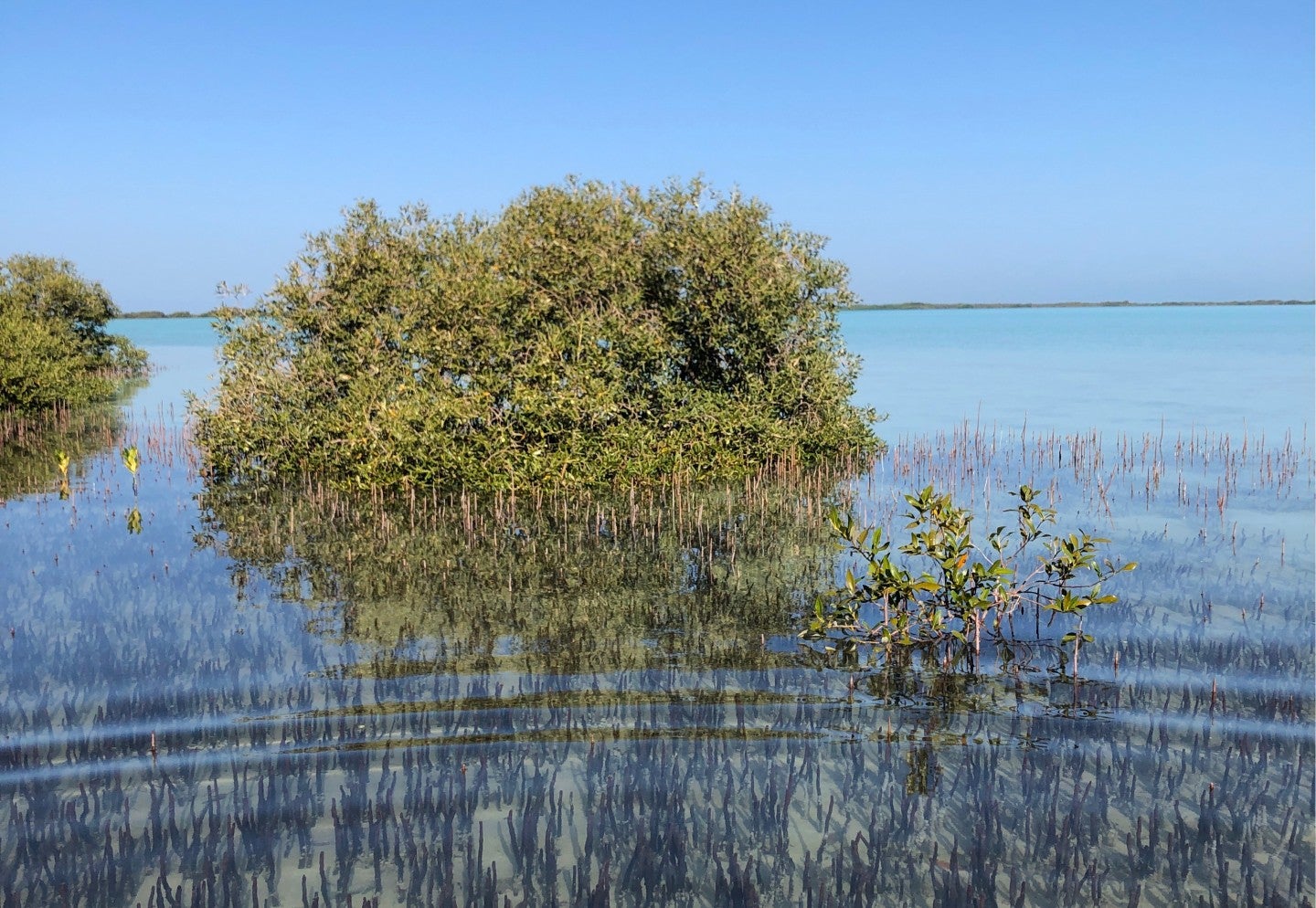
To complete their adaptation to their uniquely challenging habitat, all mangroves have leaves with waxy surfaces that lock the moisture in and automatically adjust their position to avoid the searing sun.
Defender of habitats
If mangroves’ unusual physiology isn’t enough to convince you of their remarkable nature then their myriad of other benefits surely will.
Thanks to their density and network of gnarly roots, mangroves are known for reducing beach erosion by holding the soil in place. Any sediment that washes in with the tide – and this includes, Professor Duarte says, the microplastics that are now so pervasive in the ocean – then gets trapped in this ever-expanding network of filters. Over time, as the clarity of the water improves, this sheltered environment becomes a nursery ground for fish and shellfish, which in turn help to support a rich ecosystem of marine life.
Above ground, mangroves are equally indispensable. They create environments suitable for other plants, including rare orchids, as well as insects, birds, lizards and even larger mammals like monkeys and tigers. This rich tapestry creates endless possibilities for scientific research.
In the Arabian Peninsula, for example, there are bees that harvest pollen exclusively from mangroves. Free from pesticides, these plants provide an uncontaminated source of food for the bees – so perhaps it’s no surprise that the bee population in Saudi Arabia is one of the few that’s not in decline. Scientists are now looking at sequencing the genes of these bees, says Professor Duarte, to better understand how colonies in other parts of the world can be protected.
Another field of study is the health benefits of mangroves; in particular, how it could be used in the treatment of breast cancer and other illnesses.
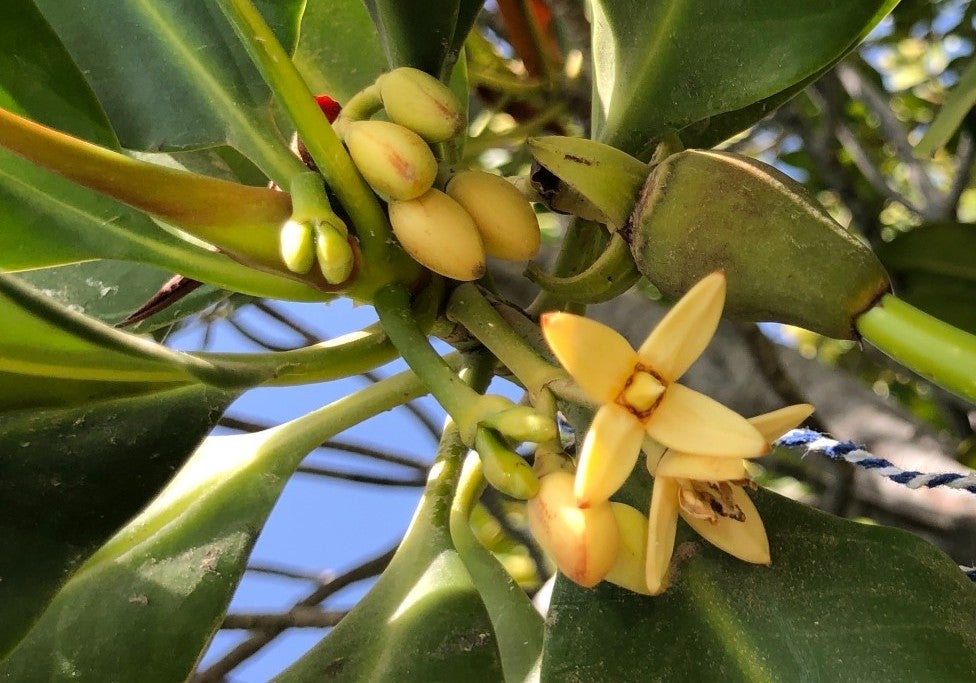
For populations that live along the shoreline, mangroves also act as a first line of defence against extreme weather phenomenon, such as cyclones and tsunamis, something that’s happening with increasing regularity as a result of climate change.
Professor Duarte was among a team of experts working with the UN to assess the damage to coastal areas in south-east Asia following the devastating Indian Ocean earthquake and tsunami in 2004, where nearly a quarter of a million people lost their lives. One surprising discovery they made was that those who lived in areas with mangroves suffered considerably less damage.
“Those villages where pockets of mangrove remain between the village and the ocean actually had almost no loss of human lives, and the losses of infrastructure were much less,” he explained. “So the mangroves are also the first line of defence for shorelines against cyclones, against tsunamis and against sea level rise.”
The value of mangroves are of course well known to communities that live near these protective forests. Professor Duarte cites the example of the Mekong Delta, where much of the mangrove forest was destroyed through the use of herbicides and napalm by US forces during the Vietnam War between 1955 and 1975. Recognising the importance of the resource, the Vietnamese people “took it upon themselves to replant the mangroves” after the war.
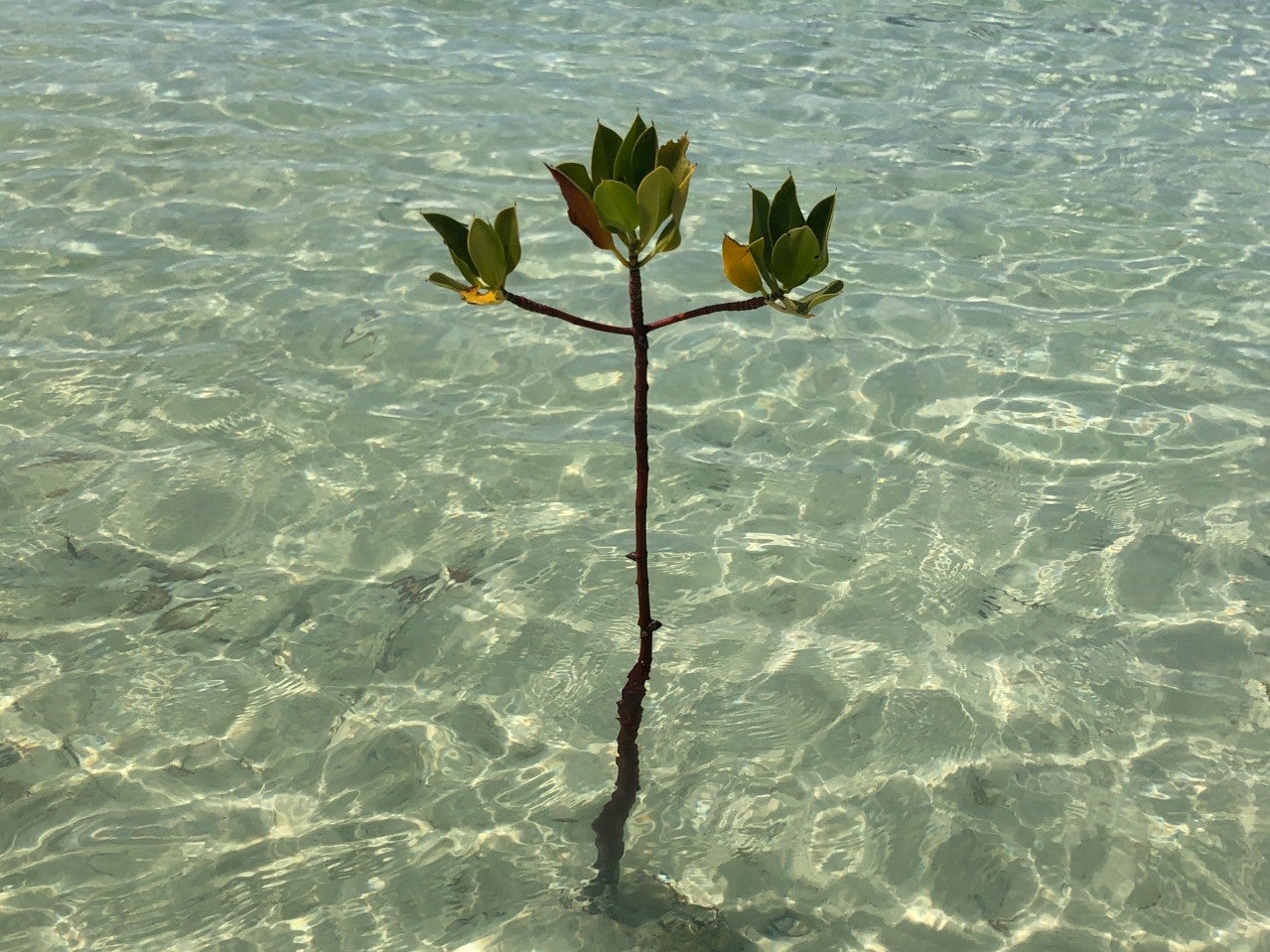
“They planted 1,700 sq km of mangroves in the 10 years after the war,” Professor Duarte adds, “which remains the most significant ecosystem restoration ever attempted by humans.”
Nature’s cleaner
The restoration work completed by the Vietnamese people did more than just safeguard their future, it also benefited the environment at large.
One study from 2011 estimated that a single hectare of mangrove forest stored an average of 1,025Mg C (1,025 tonnes of carbon) . This is around four times that of tropical rainforests and, based on the World Bank’s estimates of CO2 emissions per capita, is enough to offset a year’s worth of emissions for 228 people. In the case of Vietnam, the mangroves that were restored by the 1980s were enough to offset five years of carbon emissions for the entire country, Professor Duarte says.
The mangrove’s carbon sequestering abilities come in two folds, the first being the CO2 stored in the plant itself. The second is through its network of roots, which allow microbial mats to grow in their sheltered crevices. These mats are constantly sucking in the CO2 from the atmosphere to create oxygen, so much so that you can actually see clusters of bubbles.
Just a few years ago, scientists discovered a third way that mangroves can eliminate carbon emissions: by using acids produced by their roots to dissolve carbonate rock such as limestone. This reaction turns carbon dioxide into a carbonate – a salt – and stops it from being released into the atmosphere.
It’s a particularly exciting discovery for Saudi Arabia, where there’s a drive towards reducing emissions as part of the Saudi Green Initiative, and where a large number of mangrove forests grow on limestone bases.
Mangroves in danger
But mangroves have been in decline.
The global conservation body, the International Union for Conservation of Nature (IUCN), has had mangroves on its red list of threatened species since 2008. While not yet endangered like many of the other species on the red list, mangroves are facing multiple threats as a result of human activity.
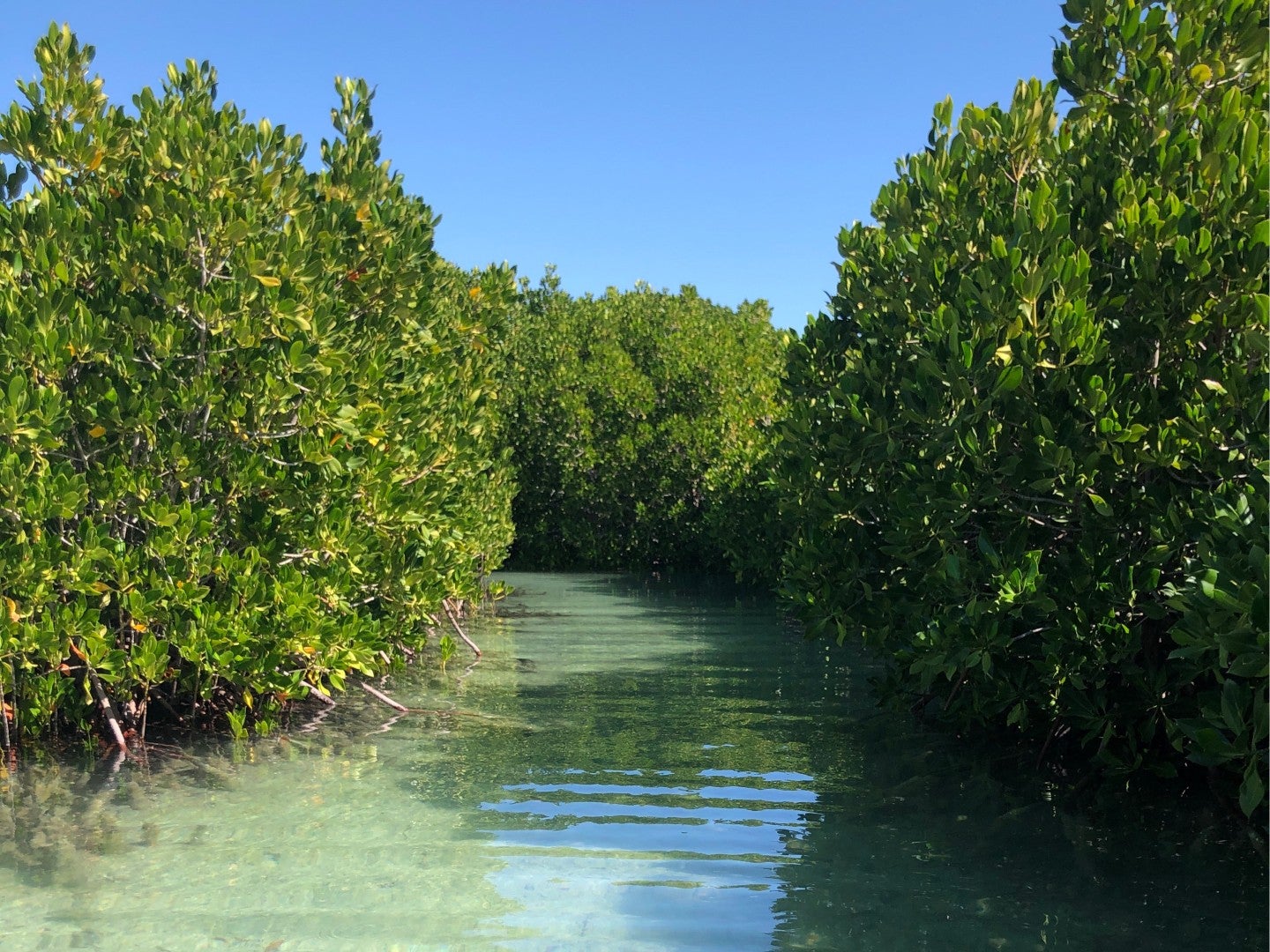
Around the world, mangroves are being cut down to make way for residential or commercial developments along the coast. The land has also been cleared to establish agriculture and aquaculture sites that even when abandoned, can’t easily be restored as mangrove forests. The repercussions of this are felt worldwide, not just locally.
Professor Duarted explained: “When we think about climate change we always think about fossil fuels but 38 per cent of the excess carbon in the atmosphere does not come from burning fossil fuels – it comes from messing up ecosystems like losing forests, losing mangroves and losing other ecosystems that reduce the carbon.”
This is one of the reasons why we need to act now, rather than in 60 years, “when we really need the carbon benefits.”
Establishing a forest
In a climate context, growing mangroves on a large scale is actually much more sustainable than other types of forests, as they don’t need any fertilisers or additional water resources. And of course, mangroves’ coastal habitat means there’s never danger of fires, unlike its counterpart on land.
“We see many forests that were planted or protected as part of carbon credits go away in smoke, with wild forest fires in many areas of the world like Brazil or Australia or California,” Professor Duarte says. “Whereas this is simply not going to happen with mangroves.”
All mangroves need to thrive is a suitable coastal location, and that’s the crux of it – mangroves need to expose their roots at least once a day to absorb oxygen from the air and this only happens in the intertidal zone, the band of coastal land that’s under water at high tide and exposed during low tide. In Saudi Arabia, this band is generally less than 100m, compared to other parts of the world where it might be several kilometres.
As a result of rising sea levels, mangrove forests might migrate to higher ground over time, to escape their flooded habitat – a process that could and perhaps should be manually accelerated, says Professor Duarte – but this assumes that there aren’t any coastal developments to impede this shift.
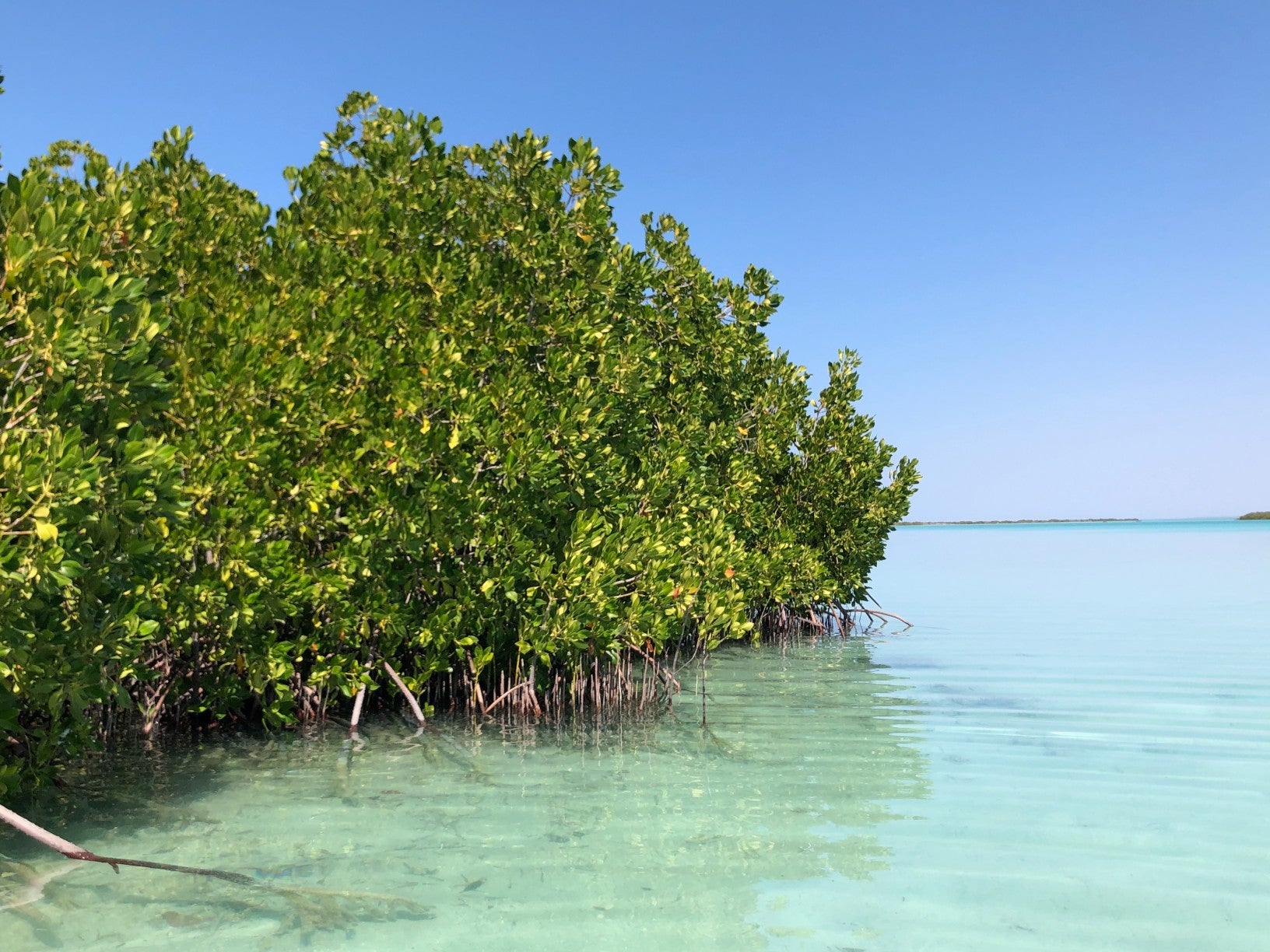
And for Saudi Arabia, and other desert environments, there’s also the problem of camels. In a landscape devoid of almost all greenery, mangroves can be a vital source of food for these voracious eaters. But it’s actually not the grazing that damages the plants – instead, the camels can accidentally trample young plants and roots as they feed, which in turn can be detrimental to future growth of the forest.
Despite these challenges, the trend of losing mangroves on a global scale is now beginning to be reversed, says Professor Duarte. In Saudi Arabia especially, there’s a concerted effort to establish new forests on both the Gulf and the Red Sea coast.
Saudi Aramco started planting mangroves in the early 1990s, for example. Under the Saudi Green Initiative, it has pledged to plant 100 million mangrove trees, contributing towards the nation’s ambitious 10 billion trees target.
More recently, the Red Sea Development Company has been working to establish its own forests as part of the Red Sea Project. Further south, there’s conservation work to enhance the mangrove forests in the Unesco-protected Farasan Islands Marine Sanctuary. And in the north, there’s also potential to establish mangrove forests in Neom, a sustainable city near the border of Jordan, which marks one of the northern-most regions where mangroves can grow in the country.
The Saudi Arabian Ba’a Foundation, a non-profit organisation that preserves endangered species and natural habitats, as well as the country’s cultural and historical sites, is also testing the possibility of planting mangroves north of the Jeddah Islamic Port – one of the busiest maritime facilities in the region.
If this pilot succeeds, it could create many wonderful opportunities to grow mangroves near all the industrial shipping ports, says Nouf Alaskar, operating officer at the Ba’a Foundation.
This effort demonstrates how the vision of the Saudi Green Initiative can be executed, says Alaskar. As Saudi Arabia creates economic opportunities, local leaders from the private and public sectors, including Kaust and its subsidiary consultancy team, the Beacon Development Company are working together to ensure that natural environments are not impeded.
“With the help of mangroves, the Alarbaeen Lake that is adjacent to the port will be cleaned and brought back to its natural state,” says Alaskar.
Increased developments make Professor Duarte optimistic about opportunities for the field, especially after seeing how the Vietnamese government was able to produce impressive results with very basic means.
“If I wasn’t a trained macro-ecologist,” he says, “I would have thought that I was in a pristine mangrove forest, so that tells us that it’s possible to restore mangroves at scale.”
It’s a testament to the resilience of these plants – we just need to give them a helping hand.
The Saudi Green Initiative is Saudi Arabia’s whole-of-government approach to combat climate change.
[This article was originally published in December 2021]
